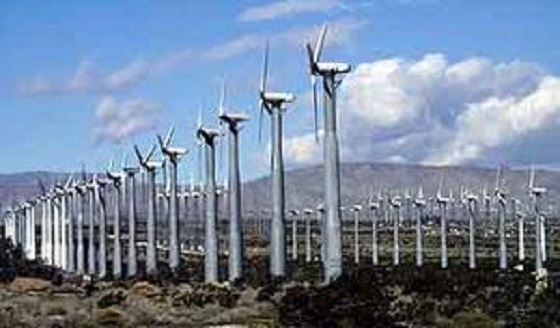Energy
One (Megawatt) is the loneliest number, but hundreds of batteries are absurd
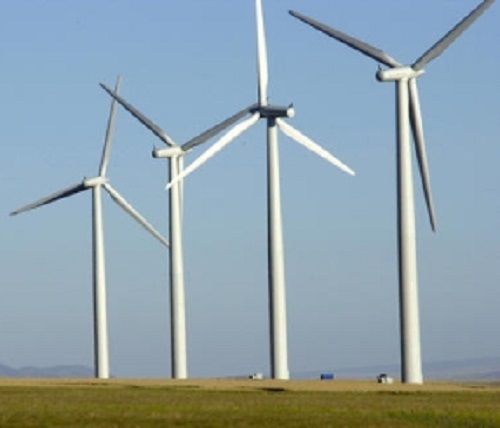
From the Frontier Centre for Public Policy
That comes out to $104,000,000,000, in batteries, alone, to cover those 18 hours on Feb. 8. To make it easier on you, $104 billion. If you use Smith’s numbers, it’s $80.6 billion. Even if I’m out by a factor of two, it’s an obscene amount of money.
SaskPower Minister Dustin Duncan recently told me I watch electricity markets like some people watch fantasy football. I would agree with him, if I knew anything about fantasy football.
I had some time to kill around noon on Feb. 8, and I checked out the minute-by-minute updates from the Alberta Electric System Operator. What I saw for wind power production was jaw-dropping to say the least. Alberta has built 45 wind farms with hundreds of wind turbines totalling an installed capacity of 4,481 megawatts.
My usual threshold for writing a story about this is output falling to less than one per cent – 45 megawatts. Its output at 11:07 a.m., Alberta time, in megawatts?
“1”
Ten minutes later:
“1”
30 minutes later:
“1”
How long can this last? Is there a fault with the website? There doesn’t seem to be.
12:07 p.m.
“1”
Strains of “One is the loneliest number” flow through my head.
I’ve seen it hit one before briefly. Even zero for a minute or two. But this keeps going. And going. I keep taking screenshots. How long will this last?
1:07 p.m.
“1”
1:29 p.m.
“1”
Finally, there’s a big change at 2:38. The output has doubled.
“2.”
That’s 2.5 hours at one. How long will two last?
3:45 p.m.
“2”
4:10 p.m. – output quadruples – to a whopping eight megawatts.
It ever-so-slowly crept up from there. Ten hours after I started keeping track, total wind output had risen to 39 megawatts – still not even one per cent of rated output. Ten hours.
It turns out that wind fell below one per cent around 5 a.m., and stayed under that for 18 hours.
Building lots of turbines doesn’t work
The argument has long been if it’s not blowing here, it’s blowing somewhere. Build enough turbines, spread them all over, and you should always have at least some wind power. But Alberta’s wind turbines are spread over an area larger than the Benelux countries, and they still had essentially zero wind for 18 hours. Shouldn’t 45 wind farms be enough geographic distribution?
The other argument is to build lots and lots of batteries. Use surplus renewable power to charge them, and then when the wind isn’t blowing (or sun isn’t shining), draw power from the batteries.
Alberta has already built 10 grid-scale batteries. Nine of those are the eReserve fleet, each 20 megawatt Tesla systems. I haven’t been able to find the price of those, but SaskPower is building a 20 megawatt Tesla system on the east side of Regina, and its price is $26 million.
From over a year’s frequent observation, it’s apparent that the eReserve batteries only put out a maximum of 20 megawatts for about an hour before they’re depleted. They can run longer at lower outputs, but I haven’t seen anything to show they could get two or five hours out of the battery at full power. And SaskPower’s press release explains its 20 megawatt Tesla system has about 20 megawatts-hours of power. This corresponds very closely to remarks made by Alberta Premier Danielle Smith, along with the price of about $1 million per megawatt hour for grid-scale battery capacity.
She said in late October, “I want to talk about batteries for a minute, because I know that everybody thinks that this economy is going to be operated on wind and solar and battery power — and it cannot. There is no industrialized economy in the world operating that way, because they need baseload. And, I’ll tell you what I know about batteries, because I talked to somebody thinking of investing in it on a 200-megawatt plant. One million dollars to be able to get each megawatt stored: that’s 200 million dollars for his plant alone, and he would get one hour of storage. So if you want me to have 12 thousand megawatts of storage, that’s 12 billion dollars for one hour of storage, 24 billion dollars for two hours of storage, 36 billion dollars for three hours of storage, and there are long stretches in winter, where we can go weeks without wind or solar. That is the reason why we need legitimate, real solutions that rely on baseload power rather than fantasy thinking.”
So let’s do some math to see if the premier is on the money.
If you wanted enough batteries to output the equivalent of the 4,481 megawatts of wind for one hour (minus the 1 megawatt it was producing), that’s 4480 megawatts / 20 megawatts per battery = 224 batteries like those in the eReserve fleet. But remember, they can only output their full power for about an hour. So the next hour, you need another 224, and so on. For 18 hours, you need 4032 batteries. Let’s be generous and subtract the miniscule wind production over that time, and round it to 4,000 batteries, at $26 million a pop. (Does Tesla offer bulk discounts?)
That comes out to $104,000,000,000, in batteries, alone, to cover those 18 hours on Feb. 8. To make it easier on you, $104 billion. If you use Smith’s numbers, it’s $80.6 billion. Even if I’m out by a factor of two, it’s an obscene amount of money.
But wait, there’s more!
You would also need massive amounts of transmission infrastructure to power and tie in those batteries. I’m not even going to count the dollars for that.
But you also need the surplus power to charge all those batteries. The Alberta grid, like most grids, runs with a four per cent contingency, as regulated by NERC. Surplus power is often sold to neighbours. And there’s been times, like mid-January, where that was violated, resulting in a series of grid alerts.
At times when there’s lots of wind and solar on the grid, there’s up to around 900 megawatts being sold to B.C and other neighbours. But for 18 hours (not days, but hours), you need 4,000 batteries * 20 megawatt-hours per battery = 80,000 megawatt hours. Assuming 100 per cent efficiency in charging (which is against the laws of physics, but work with me here), if you had a consistent 900 megawatts of surplus power, it would take 89 hours to charge them (if they could charge that fast, which is unlikely).
That’s surplus power you are not selling to an external client, meaning you’re not taking in any extra revenue, and they might not be getting the power they need. And having 900 megawatts is the exception here. It’s much more like 300 megawatts surplus. So your perfect 89 hours to charge becomes 267 hours (11.1 days), all to backfill 18 hours of essentially no wind power.
This all assumes at you’ve had sufficient surplus power to charge your batteries, that days or weeks of low wind and/or solar don’t deplete your reserves, and the length of time they are needed does not exceed your battery capacity.
Nor does it figure in how many years life are you going to get out of those batteries in the first place? How many charge cycles before you have to recapitalize the whole fleet?
For the dollars we’re talking here, you’re easily better off to four (or more) Westinghouse AP-1000 reactors, with 1,100 megawatts capacity each. Their uptime should be somewhere around 90 per cent.
Or maybe coal could be renewed – built with the most modern technology like high efficiency, low emissions (HELE), with integrated carbon capture from Day 1. How many HELE coal-fired power plants, with carbon capture and storage, could you build for either $80 billion or $104 billion? Certainly more than 4,481 megawatts worth.
Building either nuclear or HELE coal gives you solid, consistent baseload power, without the worry of the entire fleet going down, like wind did in Alberta on Feb. 8, as well as Feb. 4, 5, 6, and 7.
Indeed, according to X bot account @ReliableAB, which does hourly tracking of the Alberta grid, from Feb. 5 to 11:15 a.m., Feb. 9, Alberta wind output averaged 3.45 per cent of capacity. So now instead of 18 hours, we’re talking 108 hours needing 96+ per cent to be backfilled. I don’t have enough brain power to figure it out.
You can argue we only need to backfill X amount of wind, maybe 25 per cent, since you can’t count on wind to ever produce 100 per cent of its nameplate across the fleet. But Alberta has thousands more megawatts of wind on tap to be built as soon as the province lifts is pause on approvals. If they build all of it, maybe the numbers I provide will indeed be that 25 per cent. Who knows? The point is all of this is ludicrous.
Just build reliable, baseload power, with peaking capacity. And end this foolishness.
Brian Zinchuk is editor and owner of Pipeline Online, and occasional contributor to the Frontier Centre for Public Policy. He can be reached at [email protected].
Alberta
The beauty of economic corridors: Inside Alberta’s work to link products with new markets
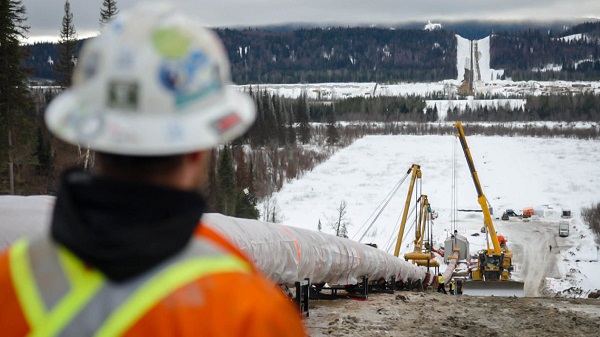
From the Canadian Energy Centre
Q&A with Devin Dreeshen, Minister of Transport and Economic Corridors
CEC: How have recent developments impacted Alberta’s ability to expand trade routes and access new markets for energy and natural resources?
Dreeshen: With the U.S. trade dispute going on right now, it’s great to see that other provinces and the federal government are taking an interest in our east, west and northern trade routes, something that we in Alberta have been advocating for a long time.
We signed agreements with Saskatchewan and Manitoba to have an economic corridor to stretch across the prairies, as well as a recent agreement with the Northwest Territories to go north. With the leadership of Premier Danielle Smith, she’s been working on a BC, prairie and three northern territories economic corridor agreement with pretty much the entire western and northern block of Canada.
There has been a tremendous amount of work trying to get Alberta products to market and to make sure we can build big projects in Canada again.
CEC: Which infrastructure projects, whether pipeline, rail or port expansions, do you see as the most viable for improving Alberta’s global market access?
Dreeshen: We look at everything. Obviously, pipelines are the safest way to transport oil and gas, but also rail is part of the mix of getting over four million barrels per day to markets around the world.
The beauty of economic corridors is that it’s a swath of land that can have any type of utility in it, whether it be a roadway, railway, pipeline or a utility line. When you have all the environmental permits that are approved in a timely manner, and you have that designated swath of land, it politically de-risks any type of project.
CEC: A key focus of your ministry has been expanding trade corridors, including an agreement with Saskatchewan and Manitoba to explore access to Hudson’s Bay. Is there any interest from industry in developing this corridor further?
Dreeshen: There’s been lots of talk [about] Hudson Bay, a trade corridor with rail and port access. We’ve seen some improvements to go to Churchill, but also an interest in the Nelson River.
We’re starting to see more confidence in the private sector and industry wanting to build these projects. It’s great that governments can get together and work on a common goal to build things here in Canada.
CEC: What is your vision for Alberta’s future as a leader in global trade, and how do economic corridors fit into that strategy?
Dreeshen: Premier Smith has talked about C-69 being repealed by the federal government [and] the reversal of the West Coast tanker ban, which targets Alberta energy going west out of the Pacific.
There’s a lot of work that needs to be done on the federal side. Alberta has been doing a lot of the heavy lifting when it comes to economic corridors.
We’ve asked the federal government if they could develop an economic corridor agency. We want to make sure that the federal government can come to the table, work with provinces [and] work with First Nations across this country to make sure that we can see these projects being built again here in Canada.
Energy
Why are Western Canadian oil prices so strong?
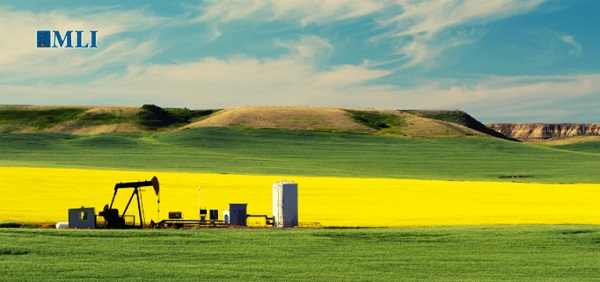
 By Rory Johnston for Inside Policy
By Rory Johnston for Inside Policy
While Canadian crude markets are as optimistic as they’ve been in months regarding US tariffs, the industry is still far from safe.

Western Canadian heavy crude oil prices are remarkably strong at the moment, providing a welcome uplift to the Canadian economy at a time of acute macroeconomic uncertainty. The price of Western Canadian Select (WCS) crude recently traded at less than $10/bbl (barrel) under US Benchmark West Texas Intermediate (WTI): a remarkably narrow differential (i.e., “discount”) for the Canadian barrel, which more commonly sits around $13/bbl but has at moments of crisis blown out to as much as $50/bbl.
Stronger prices mean greater profits for Canadian oil producers and, in turn, both higher royalty and income tax revenues for Canadian governments as well as more secure employment for the tens of thousands of Canadians employed across the industry. For example, a $1/bbl move in the WCS-WTI differential drives an estimated $740 million swing in Alberta government budget revenues.
Why are Canadian oil prices so strong today? It’s due to the perfect storm of three distinct yet beneficial conditions:
- Newly sufficient pipeline capacity following last summer’s start-up of the Trans Mountain Expansion pipeline, which eliminated – albeit temporarily – the effect of egress constraint-driven discounting of Western Canadian crude;
- Globally, the bolstered value of heavy crudes relative to lighter grades – driven by production cuts, shipping activity, sanctions, and other market forces – has benefited the fundamental backdrop against which Canadian heavy crude is priced; and
- The near elimination of tariff-related discounting as threat of US tariffs has diminished, after weighing on the WCS differential to the tune of $4–$5/bbl between late-January through early March.
We break down each of these factors below.
A quick primer: differentials, decomposed

Before we dive in, let’s quickly review how Canadian crude pricing works. WCS crude is Canada’s primary export grade and is virtually always priced at a discount to WTI, the US benchmark for oil prices, for two structural reasons outlined below. More accurately referred to as the differential (in theory, the price difference could go both ways), this price difference is a fact of life for Canadian crude producers and sits between $11–$15/bbl in “normal” times. Over the past decade, WCS has only sported a sub-$10/bbl differential less than 10 per cent of the time and most such instances reflected unique market conditions, like the Alberta government’s late-2018 production curtailment and the depths of COVID in early 2020.

The structurally lower value of WCS relative to WTI is driven by two main structural factors: quality and geography.
First and very simply, WCS is extremely heavy oil – diluted bitumen, to be specific – in contrast to WTI, which is a light crude oil blend. Furthermore, WCS has a high sulphur content (“sour,” in industry parlance) compared to the virtually sulphur-free WTI (“sweet”). WCS crude requires specialized equipment to be effectively processed into larger shares of higher-value transportation fuels like diesel as well as the remove the sulphur, which is environmentally damaging (see: acid rain)l; so, WCS is “discounted” to reflect the cost of that additional refining effort. Quality-related discounting typically amounts to $5-$8/bbl and can be seen in its pure form in the price of a barrel of WCS is Houston, Texas, where it enjoys easy market access.

Second, Western Canadian oil reserves are landlocked and an immense distance from most major refining centers. Unlike most global oil producers that get their crude to market via tanker, virtually all Canadian crude gets to end markets via pipeline. So, this higher cost of transportation away from where the crude is produced (aka “egress”) represents the second “discount” borne by the relative price of Canadian crude, required to keep it competitive with alternative feedstocks. Transportation-related discounting typically amounts to $7-$10/bbl and can be seen in the difference between the price of a barrel of WCS in the main hub of Hardisty, Alberta and the same barrel in Houston, Texas.

Moreover, transportation-related discounting is worse when pipeline capacity is insufficient, which has so frequently been the case over the past decade and a half. When there isn’t enough pipeline space to go around, barrels are forced to use more expensive alternatives like rail and that adds at least another $5/bbl to the required industry-wide pricing discounting – because prices are always set at the margin, or in other words by the weakest barrel. In especially acute egress scarcity, the geographic-driven portion of the differential can blow out, as we saw in late-2018 when the differential rose to more than $50/bbl before the Alberta government forcibly curtailed provincial production to reduce that overhang.
Additionally, the election of US President Donald Trump – and, specifically, the threat of US tariffs on Canadian exports – has introduced a third factor in the differential calculation. Over the past few months, shifts in the WCS differential have also been reflecting the market’s combined handicapping of (i) the probability of tariffs hitting Canadian crude and (ii) the rough share of the tariff burden borne by Canadian exporters.
All three of these factors – global quality, egress availability, and market anticipation of tariff US risk – have shifted decisively and strongly in favour of WCS over the recent weeks and months.
More pipelines, fewer problems

The first reason that Canadian oil prices are remarkably strong at the moment is sufficient pipeline capacity. The perennial bugbear of Western Canadian oil producers, pipeline capacity is, quite unusually, sufficient thanks to last summer’s start-up of the Trans Mountain Expansion Project (TMX). TMX is the largest single addition to Western Canadian egress capacity in more than a decade and, since TMX entered service last summer, the transportation-related differential has remained low and stable, eliminating the largest and most common drag on Canadian crude pricing.
Without TMX, the Western Canadian oil industry would be suffering an all too familiar and increasingly acute egress crisis. Acute egress shortages would have dwarfed the threat of US tariffs and pushing differentials, in stark contrast to today, far wider – the spectre of provincial production curtailment would not have been out of the question. And it is also important to note that this pipeline sufficiency is inherently temporary. Current pipeline sufficiency will likely only last another year or two at most and then Western Canadian egress will require additional expansions to avoid the resurrecting of egress-scarcity-driven differential blowouts.
Heavy is the crude that wears the crown

The second reason that Canadian oil prices are remarkably strong now is the unusually strong global market for heavy crude. Heavy crude grades (e.g., Iraqi Basra Heavy and Mexican Maya), medium crude grades (e.g., Dubai and Mars), and high sulphur fuel oil (used in global shipping) have all seen their value rise relative to Brent and WTI benchmarks, which both reflect lighter, sweet grades of crude.
For WCS, the differential has narrowed from more than $10/bbl at the end of 2023 to around $2.8/bbl under WTI. The bolstered value of heavy crudes relative to lighter grades is being driven by a host of factors including ongoing OPEC+ production cuts (much of which came in the form of heavier crude grades), strong shipping activity, and tighter sanctions against traditional suppliers of heavy shipping fuel like Russia and more recently Venezuela.
What tariff threat?

Finally, the most acute and volatile reason that Canadian oil prices are remarkably strong at the moment is the near elimination of US tariff-related discounting. The US imports more than half of its total foreign oil purchases from Canada and Canadian crude has long enjoyed tariff-free access to the US market. Tariff-related pricing pressure began in earnest in late-2024 as Canadian crude markets tried to build in an ever-evolving handicapping of that tariff risk following Trump’s initial tariff threats. Tariff-related discounting grew stronger from mid-January through February with the excess geographic WCS differential rising to nearly $5/bbl (see chart above and read “Canadian Crude Drops Tariff Discount” for more on the logic of this measure).
After a months-long rollercoaster of “will he/won’t he” uncertainty around the imposition of US tariffs on Canadian crude imports, USMCA-compliant exemptions and broader US official chatter regarding potential outright Canadian crude exemptions have allowed markets to reduce the (roughly) implied probability to effectively zero. This factor alone narrowed the headline WCS differential in Hardisty, Aberta, by $3–$4/bbl over the past month.
Conclusion
Canadian oil prices are so strong today because just about everything that can be going right is going right. WCS differentials are benefitting from a perfect storm of (i) unusually sufficient pipeline capacity, (ii) exceptionally strong global heavy crude markets, and (iii) a near elimination of US tariff-related discounting. Together, these factors are lifting the relative value of Canadian crude oil exports, and this is a boon for Canadian oil industry profits, provincial royalty income, income tax receipts, and employment in the sector.
Looking ahead, WCS differentials may narrow by another dollar or two as this beneficial momentum persists. However, the balance of risk is now tilted towards a reversal (i.e., widening) of differentials over the coming year as OPEC+ begins to ease production cuts and Western Canadian production continues to grow without the hope of any new near-term pipeline additions. While Canadian crude markets are as optimistic as they’ve been in months regarding US tariffs, the industry is still far from safe – given the volatility of policy coming out of the White House, there is still a chance that this near-erasure of tariff risk from Canadian crude pricing may have come too far, too fast.
If and as tariff concerns fall away, egress sufficiency (i.e., pipeline capacity) will resume its place as king of the differential determinants. At the current rates of Western Canadian production growth, Canada is set to again overrun egress capacity – after the relief provided by the start-up of TMX – over the next year or two at most. While Canada may have dodged a near-term bullet to crude exports destined for the US, this situation serves to only emphasize the continued challenges associated with current pipeline infrastructure. It would be prudent for Canadian politicians to begin shifting their current concerns towards the structural, and entirely predictable, threat of renewed egress insufficiently coming down the pipe.
About the author
Rory Johnston is a leading voice on oil market analysis, advising institutional investors, global policy makers, and corporate decision makers. His views are regularly quoted in major international media. Prior to founding Commodity Context, Johnston led commodity economics research at Scotiabank where he set the bank’s energy and metals price forecasts, advised the bank’s executives and clients, and sat on the bank’s senior credit committee for commodity-exposed sectors.
-

 2025 Federal Election2 days ago
2025 Federal Election2 days agoJoe Tay Says He Contacted RCMP for Protection, Demands Carney Fire MP Over “Bounty” Remark
-

 2025 Federal Election2 days ago
2025 Federal Election2 days agoHong Kong-Canadian Groups Demand PM Carney Drop Liberal Candidate Over “Bounty” Remark Supporting CCP Repression
-

 2025 Federal Election2 days ago
2025 Federal Election2 days agoPoilievre To Create ‘Canada First’ National Energy Corridor
-

 2025 Federal Election2 days ago
2025 Federal Election2 days agoAlcohol tax and MP pay hike tomorrow (April 1)
-

 2025 Federal Election2 days ago
2025 Federal Election2 days agoChinese Election Interference – NDP reaction to bounty on Conservative candidate
-
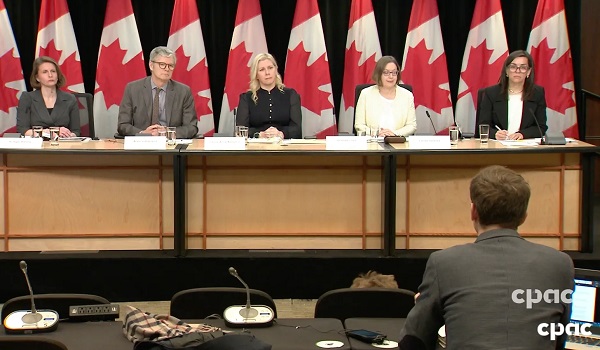
 2025 Federal Election2 days ago
2025 Federal Election2 days agoChina Election Interference – Parties Received Security Briefing Days Ago as SITE Monitors Threats to Conservative Candidate Joe Tay
-

 2025 Federal Election2 days ago
2025 Federal Election2 days agoFixing Canada’s immigration system should be next government’s top priority
-

 2025 Federal Election1 day ago
2025 Federal Election1 day agoPoilievre, Conservatives receive election endorsement from large Canadian trade union



